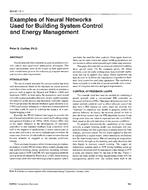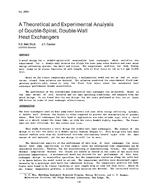In 2002 the Air Distribution Institute (ADI) contracted with Texas A&M University to conduct airflow research focusing on pressure loss comparison between non-metallic flexible ducts and rigid round sheet metal ducts. In order to create broad based industry representations it was decided to invite co-funded participation by other credible industry group ASHRAE became a co-funding partner in 2005 with Air Conditioning Contractors of America (ACCA), Air Distribution Institute (ADI), Lennox Industries and Texas Utilities. Each co-funding partner participated in steering committee meetings to direct the research and monitor progress.
The first phase of the project was taking and analyzing (1) data for 6 in., 8 in., and 10 in. rigid sheet metal duct, and (2) data for straight board supported and joist supported configurations of 6 in., 8 in. and 10 in. flexible duct, each with maximum stretch, 4%, 15%, 30% and 45% compression. Sag was accomplished by draping the ducts over two-by-four “joists” and acquiring data with ducts that had minimum sag and maximum sag. Minimal sag involved compressing the duct on a flat surface (i.e. “board”) and then letting the duct sag with the board gently removed. Maximum sag involved setting up minimum sag and then manually extending the sag with a downward force the then releasing and letting the duct retract.
The second phase of the project was (1) to design and fabricate a 6000 cfm air flow measuring chamber, (2) repeat the 6 in., 8 in, and 10 in. board supported tests, and (3) extend the tests by adding 12 in., 14 in., and 16 in. straight board supported flexible duct, again with maximum stretch, 4%, 15%, 30% and 45% compression. Photos of the Phase 2 work follows. No rigid sheet metal and sag (joist supported configurations) were in the Phase 2 scope. Six inch, 8 in. and 10 in. rigid sheet metal and joist supported tests were done during the Phase 1 work.
Product Details
- Published:
- 2011
- Number of Pages:
- 66
- File Size:
- 1 file , 5.5 MB
- Product Code(s):
- D-RP-1333


